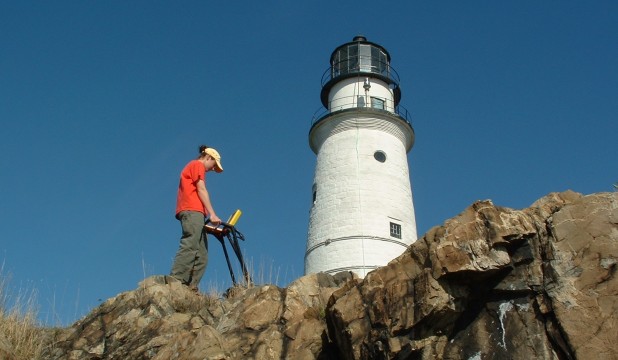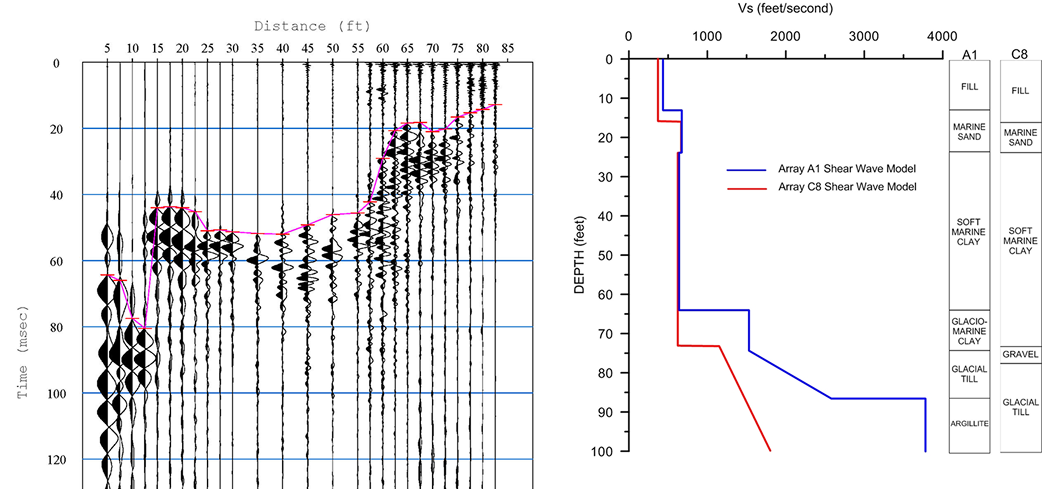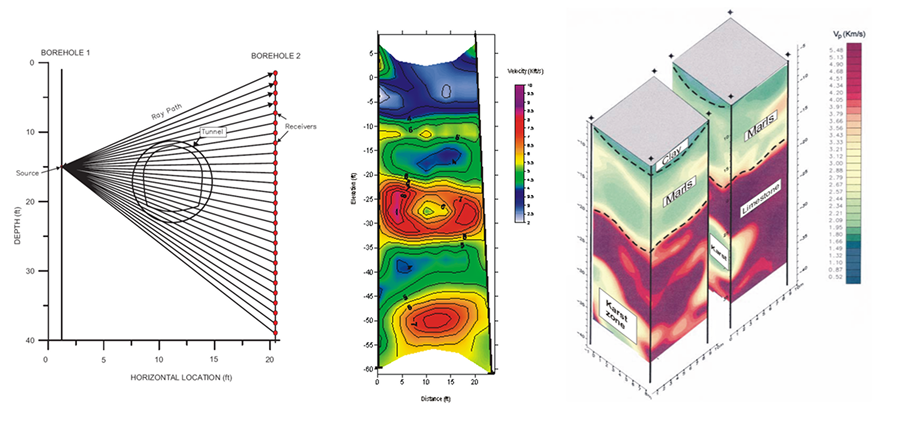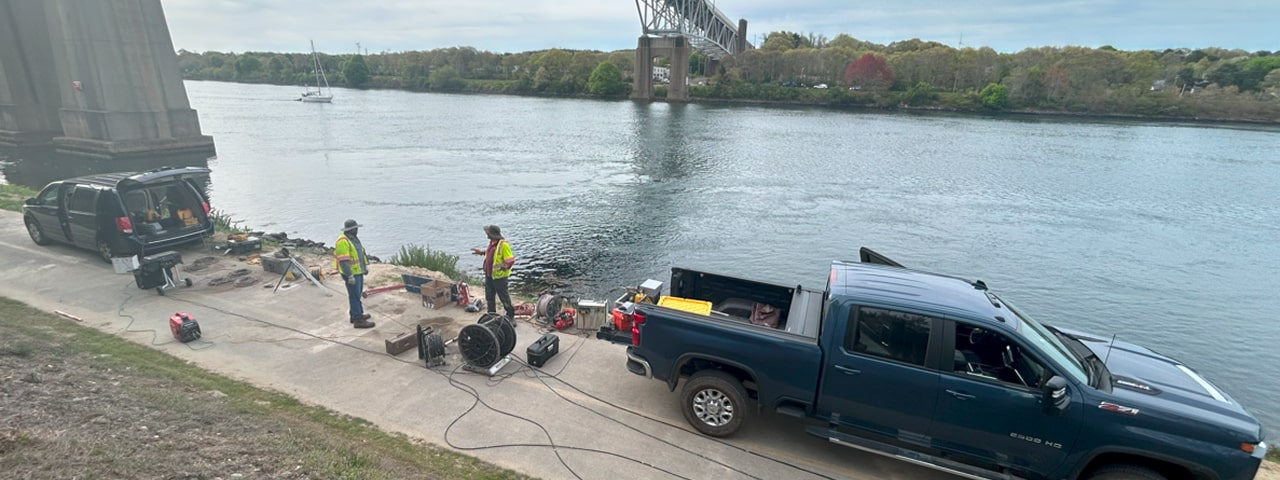
Borehole Seismic
Borehole Seismic Surveys including crosshole seismic testing, crosshole seismic tomography, downhole seismic testing, full waveform sonic (FWS), parallel seismic testing are used to obtain in situ properties of soil and rock strata and information on foundation element depths. Often used as part of a geotechnical investigation, the borehole seismic surveys yield valuable information on the strength and cohesiveness of the underlying sediment and bedrock.
Crosshole seismic testing measures the time for horizontally traveling compressional (P) and shear (S) waves to travel from a source hole to a receiver hole over a relatively short distance at depth. Travel times are used to determine P and S wave velocities, which can be used to compute Poisson’s ratio, as well as the other elastic dynamic moduli if density information is available. Crosshole seismic testing is conducted in accordance with ASTM D 4428/D 4428M-14. Since the distance between borings can vary with depth due to the deviation of the borehole from verticality, HRGS always performs a borehole deviation survey as part of the crosshole survey.
Crosshole seismic tomography is a modification of the crosshole seismic testing where data are acquired for multiple receiver locations for each source location providing a 2D tomogram of the change in compressional or shear wave velocity for the volume of material between the borings. Additional boreholes can be added to create a 3D tomogram.
Downhole seismic testing is conducted to determine the variation in shear wave velocity versus depth using a single boring. While the costs to conduct the survey are lower due to the requirement of only a single boring, the data are not as detailed or reliable as the crosshole seismic testing. The method is cost effective approach when the detail and accuracy are not as much of a concern.
Full waveform sonic (FWS) testing is conducted using a downhole probe in a single borehole. Shear and compressional wave velocities are measured over short distances using a source and multiple receivers on the same probe. The method is effective at measuring the changes in shear and compressional wave velocity in the borehole that can be related to changes in stratigraphy, rock strength, and fracturing.
Parallel seismic testing is conducted to determine the depths of unknown foundation elements such as footings, piers, and piles. The method requires that a borehole is installed as close as possible to the structure of interest, and at least 10-15 feet deeper than the expected depth of the structure. By gently impacting the structure, or any component directly connected to the structure, and measuring the time of transit of the elastic wave from the structure to the boring, the depth of the bottom of the structure can be determined.
Applications of borehole seismic surveys
Construction & Engineering
- Characterize Soil and Bedrock Properties:Map geologic structures that may impact construction feasibility and safety.
- Seismic Site Classification (IBC Requirements):Determine site class using shear-wave velocity profiles for compliance with the International Building Code.
- Earthquake Engineering:Model seismic wave behavior for structural response analysis and seismic hazard assessment.
- Analyzing Earth Dam Stability:Evaluate the internal integrity and dynamic response of earth embankments.
- Determine Depths of Foundations/Foundation Elements



